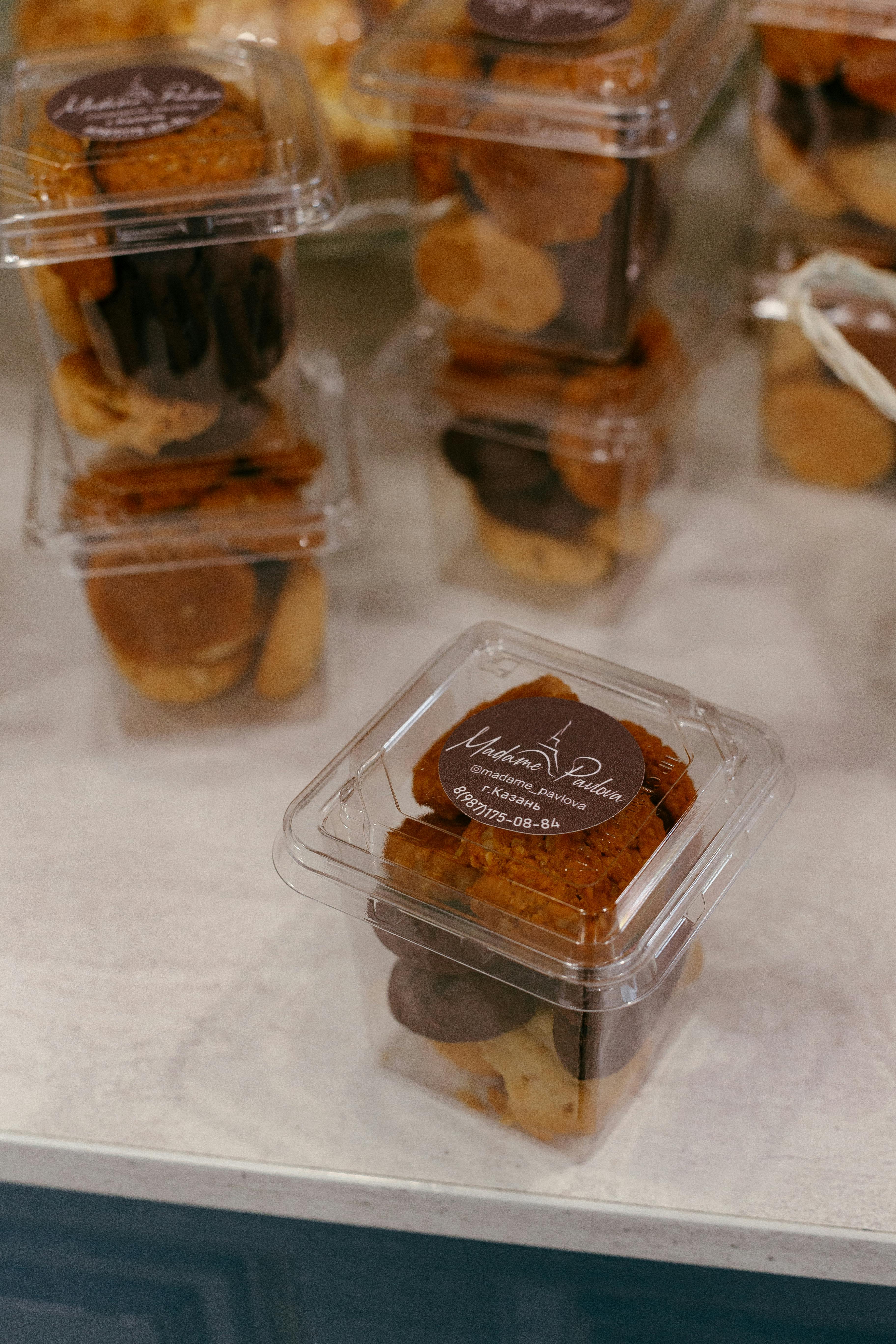In this article, you will embark on a delightful journey into the world of baking bread from scratch. Whether you’re a novice in the kitchen or simply craving the warm aroma of freshly baked bread wafting through your home, this beginner’s guide will equip you with the essential knowledge and techniques to create your very own golden-brown loaves. Get ready to knead, shape, and savor the rewards of homemade bread as we delve into the art of bread baking together. So, let’s roll up our sleeves and embark on this delicious adventure!

Choosing the Right Flour
Understanding types of flour
When it comes to baking bread from scratch, choosing the right flour is crucial. Understanding the different types of flour available will help you achieve the desired texture and flavor in your bread. The most common types of flour used in bread baking are all-purpose flour, bread flour, whole wheat flour, and gluten-free flour.
Deciding between all-purpose or bread flour
All-purpose flour and bread flour are the two main types of flour used in bread baking. All-purpose flour is versatile and can be used for a variety of baked goods, including bread. It has a moderate protein content, which gives the bread a tender texture. On the other hand, bread flour has a higher protein content, which results in a stronger gluten structure, giving the bread a chewier texture. Deciding between all-purpose flour or bread flour depends on the texture and structure you desire in your bread.
Considering whole wheat or gluten-free options
For those looking for healthier alternatives or with dietary restrictions, whole wheat flour and gluten-free flour are great options. Whole wheat flour is made from grinding the entire wheat kernel, including the bran and germ, which adds more nutritional value to the bread. Gluten-free flour, as the name suggests, is free from gluten, a protein found in wheat, barley, and rye. This is a suitable option for those with celiac disease or gluten intolerance. Consider your dietary needs and preferences when choosing between whole wheat or gluten-free options.
Gathering Essential Ingredients
Yeast and different types
Yeast is an essential ingredient in bread baking as it helps the dough rise and gives the bread its fluffy texture. There are different types of yeast available, including active dry yeast, instant yeast, and fresh yeast. Active dry yeast needs to be dissolved in warm water before adding it to the dry ingredients, while instant yeast can be added directly without dissolving. Fresh yeast is similar to instant yeast but has a shorter shelf life. Choose the type of yeast based on the recipe and your preference.
Salt and its role in baking
Salt might seem like a small component, but it plays a vital role in baking bread. Salt not only enhances the flavor of the bread but also helps control fermentation, strengthens gluten, and improves the shelf life of the bread. It is important to measure salt correctly according to the recipe to achieve the right balance of flavors in your bread.
Sweeteners and adding flavor
Sweeteners add a touch of sweetness to the bread and enhance its flavor. Common sweeteners used in bread baking include sugar, honey, and molasses. These sweeteners not only provide flavor but also promote browning and improve the texture of the bread. Experiment with different types of sweeteners to find the one that suits your taste buds.
Fats and oils for texture
Fats and oils play a crucial role in the texture and moisture content of the bread. They add tenderness and richness to the bread, making it soft and flavorful. Common fats and oils used in bread baking include butter, vegetable oil, and olive oil. Each fat or oil has its own unique flavor and characteristics, so choose the one that complements the flavors in your bread.
Liquid components and their importance
Liquid components, such as water or milk, are crucial in bread baking as they hydrate the dry ingredients and activate the yeast. The type and amount of liquid used in the recipe can greatly affect the texture and structure of the bread. Pay attention to the recommended liquid-to-flour ratio and adjust accordingly to achieve the desired consistency in your dough.

Mastering the Techniques
Proofing yeast for optimal results
Proofing yeast is an important step in bread baking as it ensures that the yeast is active and ready to leaven the dough. To proof yeast, dissolve it in warm water with a pinch of sugar and let it sit for about 5-10 minutes. If the yeast becomes frothy and bubbly, it means it is active. Properly proofed yeast will give you optimal results and a well-risen loaf of bread.
Kneading the dough to develop gluten
Kneading is the process of working the dough to develop gluten, which gives the bread its structure and elasticity. This is typically done by stretching, folding, and pressing the dough repeatedly. Kneading helps improve the texture of the bread, making it soft and chewy. Different recipes may require different amounts of kneading, so follow the instructions carefully to achieve the desired results.
Understanding the resting and rising process
After kneading the dough, it is important to let it rest and rise. Resting allows the gluten to relax, making the dough easier to shape and handle. Rising, also known as proofing, is the process in which the yeast converts sugars in the dough into carbon dioxide gas, causing the dough to expand. This gives the bread its light and fluffy texture. Follow the recommended resting and rising times in your recipe to ensure proper fermentation and a well-risen loaf.
Shaping and scoring the loaf
Shaping the loaf is an important step in creating a well-formed bread. It helps create an even and uniform shape, promoting even baking. There are different shaping techniques depending on the type of bread you are making, such as rolls, baguettes, or sandwich loaves. Scoring the loaf, or making shallow cuts on the surface, controls the expansion of the bread during baking and creates a beautiful design. Practice different shaping and scoring techniques to add your own artistic touch to the bread.
Learning to create steam for a perfect crust
Steam plays a crucial role in achieving a perfect crust on your bread. It helps keep the surface of the dough moist during the initial stages of baking, allowing the bread to expand properly before the crust sets. There are various methods to create steam in the oven, such as spraying water, placing a pan of hot water, or using a steam oven. Experiment with different methods to find the one that works best for you.
Creating Basic Bread Dough
Choosing a recipe and following measurements
When creating basic bread dough, it is important to choose a recipe that suits your skill level and preferences. Start with a simple recipe that clearly outlines the ingredients and measurements. Follow the measurements accurately to ensure consistency in your bread.
Mixing dry and wet ingredients
To create the basic bread dough, mix the dry ingredients, such as flour, yeast, and salt in one bowl, and the wet ingredients, such as water or milk, in another bowl. Gradually combine the wet ingredients into the dry ingredients, mixing until a shaggy dough forms. Use a wooden spoon or your hands to bring the dough together.
Developing the dough through kneading
Once the dough comes together, transfer it onto a lightly floured surface and begin kneading. Knead the dough by pushing and stretching it away from you, then folding it back towards you. Repeat this process for about 10-15 minutes, or until the dough becomes smooth and elastic.
Allowing the dough to rise properly
After kneading, shape the dough into a smooth ball and place it in a greased bowl. Cover the bowl with a clean kitchen towel or plastic wrap and let the dough rise in a warm, draft-free place. The rising time can vary depending on the recipe, but it is generally around 1-2 hours, or until the dough has doubled in size. Patience is key during this step, as proper rising ensures a light and airy texture in the final bread.

Exploring Flavorful Variations
Adding herbs and spices for a savory twist
To add a savory twist to your bread, consider incorporating herbs and spices into the dough. Common herbs and spices include rosemary, thyme, garlic, onion powder, or even chili flakes. Experiment with different combinations to create unique flavors that complement your favorite dishes.
Incorporating seeds or grains for texture
Seeds and grains not only add texture to your bread but also provide additional nutrients. Popular choices include sunflower seeds, flaxseeds, sesame seeds, or even whole grains like oats or quinoa. These additions can be mixed into the dough or sprinkled on top of the bread before baking.
Using different types of sweeteners
If you prefer sweeter bread, consider using different types of sweeteners in your dough. Instead of sugar, try honey, maple syrup, or even molasses to add a richer and more complex flavor profile. The type of sweetener you choose will impact the overall taste of your bread, so feel free to experiment and find your preferred level of sweetness.
Experimenting with fillings and toppings
For more flavorful and visually appealing bread, consider experimenting with fillings and toppings. Fillings such as cheese, dried fruit, or nuts can be rolled into the dough before shaping. Toppings like seeds, grated cheese, or herbs can be sprinkled on top of the bread just before baking. Get creative and explore different combinations to make your bread truly unique.
Understanding the Baking Process
Preheating the oven and using the right temperature
Before baking your bread, it is essential to preheat your oven. The temperature and preheating time can vary depending on the recipe, but a common preheating temperature is around 425°F (220°C) for a standard home oven. Preheating ensures that the oven is at the correct temperature when you place the bread inside, allowing for proper rise and even baking.
Placing bread on different types of baking surfaces
The type of baking surface you choose can greatly affect the crust and texture of your bread. Baking sheets, loaf pans, or even a pizza stone can be used. Each surface has its own unique characteristics, so choose the one that suits your desired outcome. For a crispy crust, consider using a pizza stone or baking the bread directly on a preheated cast iron skillet.
Using a thermometer to check doneness
To ensure that your bread is fully cooked, it is important to check its internal temperature using a thermometer. Insert the thermometer into the center of the loaf, and if the temperature reads around 190°F (88°C) for most breads or 200°F (93°C) for enriched breads like brioche, your bread is done. This will help you avoid under or over baking your bread.
Allowing bread to cool properly
Once your bread is baked to perfection, resist the temptation to slice it immediately. It is important to allow the bread to cool properly on a wire rack. This allows the steam inside the bread to redistribute, ensuring a moist and tender crumb. Slicing the bread too soon may lead to a gummy texture and loss of moisture.
Troubleshooting Common Issues
Dealing with dense or flat bread
If your bread turns out dense or flat, there may be a few possible causes. It could be due to insufficient rising time, expired or improperly activated yeast, or using too much flour. Ensure that you follow the recommended rising times, check the freshness of your yeast, and measure your ingredients accurately.
Addressing over or underproofing
Overproofed or underproofed bread can lead to undesirable results. Overproofed bread may collapse during baking and have a coarse texture, while underproofed bread may be dense and lack flavor. Pay close attention to the recommended proofing time and the visual cues, such as the dough doubling in size, to ensure proper fermentation.
Solving issues with a tough or dry crust
A tough or dry crust can occur if the bread is baked at too high of a temperature or for too long. Adjust the baking temperature and time according to your recipe, or try covering the bread with aluminum foil during the latter part of baking to prevent further browning. Additionally, brushing the bread with melted butter or olive oil immediately after baking can help soften the crust.
Fixing problems with uneven browning
Uneven browning can occur if the bread is not placed in the center of the oven or if the oven temperature is not distributed evenly. Ensure that your bread is centered in the oven and consider rotating it halfway through baking. If your oven tends to have hot spots, you may need to invest in an oven thermometer to accurately monitor the temperature.
Adding Artistic Touches
Creating decorative shapes and patterns
Bread baking is not only about taste, but also about aesthetics. Take your bread to the next level by creating decorative shapes and patterns. Braided loaves, intricate designs, or even personalized shapes can add a touch of artistry to your bread. Use your imagination and experiment with different techniques to make your bread visually appealing.
Using different scoring techniques
Scoring, or making cuts on the surface of the bread, not only adds to the visual appeal but also influences the way the bread expands during baking. Different scoring techniques create different patterns and effects on the crust. A simple crosshatch or a more complex floral design, the choice is yours. Practice different scoring techniques to elevate the look of your bread.
Experimenting with different flours for aesthetics
Besides adding flavor, different types of flour can also bring a unique aesthetic to your bread. Consider incorporating specialty flours like rye, spelt, or cornmeal to give your bread a distinct color or texture. Mix and match different flours to create your own signature blend and enhance the visual appeal of your baked goods.
Adding toppings or glazes for visual appeal
Toppings and glazes can be the final touch to make your bread visually appealing. Sprinkle sesame seeds, poppy seeds, or coarse salt on the surface of the dough before baking to add texture and flavor. Glazes made with egg wash, milk, or honey can also give the bread a shiny and tempting look. Be creative and experiment with different toppings and glazes to make your bread truly stand out.
Storing and Preserving Bread
Knowing when to slice and store
Knowing when to slice and store your bread is important to maintain its freshness. Wait until your bread has completely cooled before slicing. This allows the crumb to set and prevents moisture loss. After slicing, store the bread in a suitable container to maintain its freshness.
Choosing appropriate storage containers
To maintain the freshness of your bread, choose appropriate storage containers. A bread box or airtight plastic or glass containers are great options. Avoid storing bread in the refrigerator, as it can make the bread go stale faster. It is also important to keep the bread away from direct sunlight or heat sources to prevent premature spoilage.
Preserving freshness with proper wrapping
Properly wrapping your bread is essential in preserving its freshness. If using a bread box or container, simply place the bread inside and close the lid tightly. If using plastic or foil, wrap the bread tightly, ensuring there are no gaps for air to enter. This helps prevent the bread from drying out and maintains its soft texture.
Using freezing methods for longer shelf life
If you have a surplus of bread or want to prolong its shelf life, freezing is a great option. Slice the bread if desired, then wrap it tightly in plastic or foil. Place the wrapped bread in a freezer-safe bag and remove as much air as possible. Frozen bread can be kept for several months and can be thawed at room temperature or toasted directly from the freezer.
Taking Bread Baking to the Next Level
Exploring advanced bread recipes
Once you have mastered the basics of bread baking, it’s time to explore more advanced recipes. Challenge yourself with sourdough bread, enriched doughs, or even international breads. These recipes may require additional techniques and ingredients, but they also offer a rewarding and flavorful experience. Keep experimenting and pushing your baking skills to new heights.
Venturing into sourdough baking
Sourdough baking is a traditional method that relies on wild yeast and bacteria to leaven the bread. It requires a sourdough starter, which is a fermented mixture of flour and water. Sourdough bread has a distinct tangy flavor and a chewy texture. It may take some time and practice to get used to the sourdough process, but the results are worth it.
Experimenting with different types of bread
Bread is a versatile food, and there are countless varieties to explore. From crusty baguettes to soft rolls, each type of bread has its own unique characteristics. Experiment with different doughs, flavors, and shapes to expand your bread-baking repertoire. The possibilities are endless, and you can create breads that suit your personal tastes and preferences.
Joining a bread-making community for support
Joining a bread-making community or forum can provide you with valuable support and inspiration. Connect with fellow bakers, ask questions, and share your experiences. There are online communities, local baking groups, or even workshops where you can learn from experienced bakers. Surrounding yourself with like-minded individuals can help you grow as a bread baker and open doors to new techniques and recipes.
Bread baking is a fulfilling and rewarding process that allows you to create delicious and warm loaves from scratch. Whether you are a beginner or an experienced baker, there is always something new to learn and explore. So grab your apron, gather your ingredients, and embark on a bread-baking journey that will not only fill your home with the aroma of freshly baked bread but also elevate your culinary skills.

